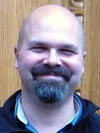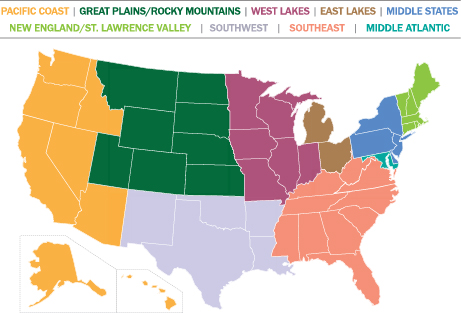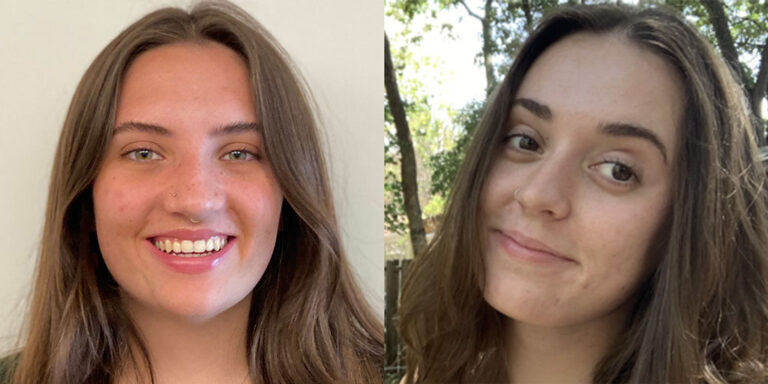Going Local or How the AAG Can Help Enhance its Regional Divisions

The region is one of geography’s main concepts and, true to these roots, regional divisions—mostly within the United States but many including Canadian provinces—developed as an intrinsic part of the American Association of Geographers. The Pacific Coast Division was formed in 1938 and the other regional divisions were established in the 1940s and 1950s. Preston James and Geoffrey Martin credit regions with much of the AAG’s growth during the 1960s, but what else would you expect from a geography organization? Regions are part of our DNA.

Today, regional divisions have distinct membership and governance structures. Several regions run their own journals; others have comprehensive websites and newsletters. And every region hosts a substantial one- or two-day meeting in the fall with field trips, keynotes, sessions, posters and prizes.
We differ in our approach to the AAG regions. Some geographers attend only the regional meetings; for them, these are the best part of the geography community. Others rarely interact with their region, focusing instead on the national meeting. And a few are active at both the regional and national levels. Despite being smack-dab in the middle of the West Lakes region, my graduate program at the University of Wisconsin–Madison had little to do with it, at least at that time. So I was only vaguely aware of regional divisions until I attended my first East Lakes meeting right after I started teaching at Kent State. I later served as division president and regional councilor.
Former presidents Kavita Pandit and Tom Baerwald have eloquently discussed some of the benefits of regions and regional meetings. These assets include a more intimate venue to contrast with the controlled chaos that is the national meeting, more opportunities to highlight geography to local politicians and businesses, the ability to show off geography to administrators, better interaction opportunities for undergrads and grads, lower costs, and more. When I attend regional conferences I notice that, with just two to four concurrent breakout sessions and fewer outside distractions, most sessions are quite well attended with ample questions and an opportunity for presenters to get their ideas across—something that is valued especially by students. And in this day of concern about carbon impacts of attending far-away conferences, regional meetings provide an option much closer to home.
My time as AAG vice president and president allows me to attend as many regional conferences as possible. I have glimpsed the culture of each region and I have enjoyed the vitality of the meetings. But my observations and discussions with regional leaders and meeting participants have also revealed some challenges. These often come in the form of varied attendance and engagement by members. At each regional meeting I attended, some schools were clearly involved whereas some significant programs were virtually absent. For graduate students looking to make contacts with scholars in their area of interest, or for undergraduates looking for information about different programs, such absences are frustrating. What may once have been a launching pad for grad students seeking to give their first paper is now ignored for a spot on the national program. Past president Audrey Kobayashi decried a “huge indifference to regional division activities across the country,” at least among some of the larger universities. This creates division; it creates a sense of abandonment. And frankly it means that the regions cannot function as well as they should. Past president Julie Winkler posed some important questions to ask about the regional meetings: How can the regional divisions strengthen geography at the national level? Is the attendance at regional division meetings proportional to the types of institutions in the region? What are some of the gaps that could be addressed?
So we must incentivize healthier regions and better regional meeting participation in order to bolster the AAG and geography as a whole. To that end, I established a task force—made up of members of each region—to understand some of the problems and point to potential solutions. Thus far, we have been asking regions a lot of questions, gathering information on various strengths and weaknesses, and then thinking of ways the AAG can assist. These suggestions come from the regions themselves and, if implemented, could considerably bump up the value of regional participation.
The first concerns are tied to regional governance. Quite plainly, many regions have difficulty finding enough willing leaders. Regions do not have professional staff and so governance and conference planning falls on the shoulders of volunteers. Some people feel that the recognition is not at all commensurate with the demands of this vital service. To this end, the AAG has pledged to provide more recognition for regional volunteers, enhance opportunities for regional officers to exchange ideas at the national convention and beyond, and perhaps waive the national meeting registration fees for division presidents or chairs.
Second, there is the question of how well the AAG might help with the management of the regions and their meetings. This September we sent out a survey asking if regional officers knew about all of the items the central office can manage: insurance, bookkeeping, a meeting registration license, Zoom account, childcare subsidy, and some others. The responses showed that not all of these services are universally known, yet they could save each region a big headache and some serious cash.
Finally, how might the AAG support and improve attendance at the regional meetings? In addition to the services listed above, we are committed to creating more incentives. We already established the AAG Council Award for Outstanding Graduate Student Paper at a Regional Meeting. This award of $1,000 that goes toward attendance at the national meeting is prestigious and profitable; I believe it has led to more students attending regional meetings. Other awards could be created—for outstanding undergraduate students or for faculty mentors who shepherd several students to regional meetings, for example. We could look at discounting the cost for students to participate in regional meetings. And for the regions themselves and for the hardworking people who put together a regional meeting, we are exploring various financial and non-financial areas of support. We will strive to establish more of an AAG presence at each meeting, going beyond the president giving the keynote. Perhaps most promising of all, there will be much more publicity for the regional meetings: at the annual spring meeting, on the AAG website, and on social media.
All these incentives must be matched with additional things that regions can do. The onus of putting together a regional meeting falls on just a few people. A manual of best practices, available to everybody, would be useful to see what has worked and what must be done and at what time. Another suggestion is to think about ways to combine a regional meeting with another meeting. Sometimes joint regional meetings can make a lot of sense. Other times, the meeting can be held concurrent with a specialty organization that attracts people from across the world. One promising avenue is to pair some of these meetings with a set of interested specialty groups. Could there be value in getting a dedicated geographical specialty conference that would share work, costs, and revenues with a regional division? This could create a bigger playing field.
Every region has a devoted core of people who participate in regional governance and regularly attend their fall meeting. But we can move beyond these mainstays to create a more robust level of participation: creating real incentives for people to work with their regions and to participate in regional meetings and making people feel that they and their students will obtain something of value at the regions which they cannot get elsewhere. These can be accomplished and, if they are, our regions will grow stronger and the American Association of Geographers as a whole will thrive.
— Dave Kaplan
AAG President
DOI: 10.14433/2017.0065


